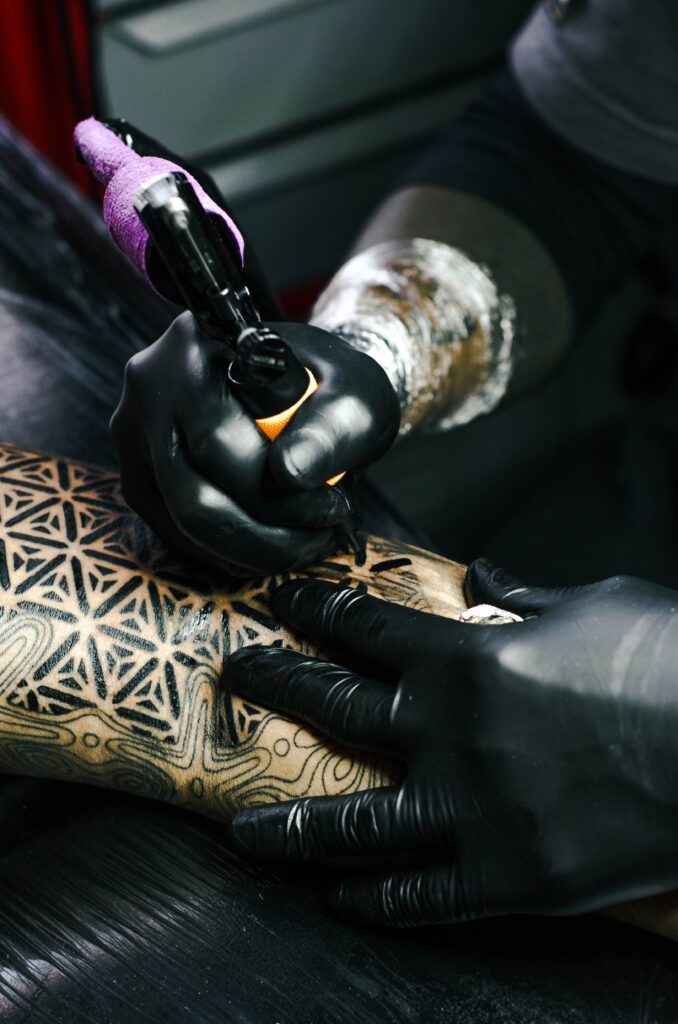Tattoos are a form of self-expression, and they often hold deep personal meaning. However, over time, your tastes, preferences, or circumstances may change, leading you to consider modifying or covering up an existing tattoo. While getting a cover-up tattoo is a viable option, it’s often advisable to lighten or fade the original tattoo before proceeding with the new design. In this blog post, we’ll explore the reasons why you should consider lightening or fading your tattoo before getting a cover-up.
1. Improved Design Flexibility:
One of the primary advantages of lightening or fading your existing tattoo before a cover-up is the increased design flexibility it offers. A heavily saturated or dark tattoo can limit the creativity and choices for your new design. By lightening the old tattoo, you open up more possibilities for your cover-up, allowing the artist to incorporate a wider range of colors and intricate details.
Covering up a dark or densely inked tattoo with a new design can sometimes lead to complications. Without proper fading or lightening, the old tattoo may show through the new one, resulting in a muddled or disorganized appearance. By fading the original tattoo, you reduce the risk of interference and ensure that the new design stands out as intended.
Lightening or fading the existing tattoo can help achieve a cleaner and more seamless cover-up. Tattoo artists often use lighter colors or intricate shading to hide the old tattoo effectively. A faded canvas provides a smoother backdrop for the new artwork, resulting in a cleaner and more aesthetically pleasing result.
4. Reduced Tattoo Visibility:
A significant benefit of fading or lightening your tattoo before a cover-up is that it makes the old tattoo less noticeable during the transition period. A partially faded tattoo is less conspicuous than the original dark ink, which can be advantageous if you need time to plan your cover-up or if you want to gradually change the tattoo’s appearance.
5. Shorter Cover-Up Sessions:
Cover-up sessions can be lengthy, especially if the original tattoo is dense or heavily pigmented. By prepping your tattoo with fading or lightening sessions, you may reduce the overall time needed for the cover-up. This can be more comfortable for you and may save you money on tattoo artist fees.
6. Enhanced Tattoo Quality:
Fading or lightening the original tattoo can help create a smoother and more even canvas for the new design. This can result in a higher-quality cover-up, with better ink absorption and reduced risk of ink migration or color bleed from the old tattoo.
7. Minimized Risk of Regret:
Before committing to a cover-up, lightening or fading your tattoo allows you to assess whether you’re truly ready for the change. Sometimes, individuals decide that they prefer the lighter, partially faded tattoo or even opt to keep it as it is. This approach minimizes the risk of regret and ensures that you’re making a well-considered decision.
8. Consultation with Tattoo Artists:
Before undergoing any fading or lightening sessions, it’s essential to consult with a skilled tattoo artist who specializes in cover-ups. They can assess your existing tattoo, discuss your cover-up goals, and provide guidance on the best approach. Tattoo artists with experience in cover-ups will have valuable insights on the fading process and can recommend a customized plan for your specific needs.
In conclusion, while getting a cover-up tattoo is an excellent way to transform or modify your existing ink, it’s often wise to consider lightening or fading the old tattoo beforehand. This approach offers numerous benefits, including improved design flexibility, avoidance of complications, achieving a cleaner look, and reduced tattoo visibility. It also allows you to work closely with a skilled tattoo artist to plan and execute the cover-up effectively. Ultimately, lightening or fading your tattoo is a strategic step toward ensuring a successful and satisfying cover-up tattoo experience.

